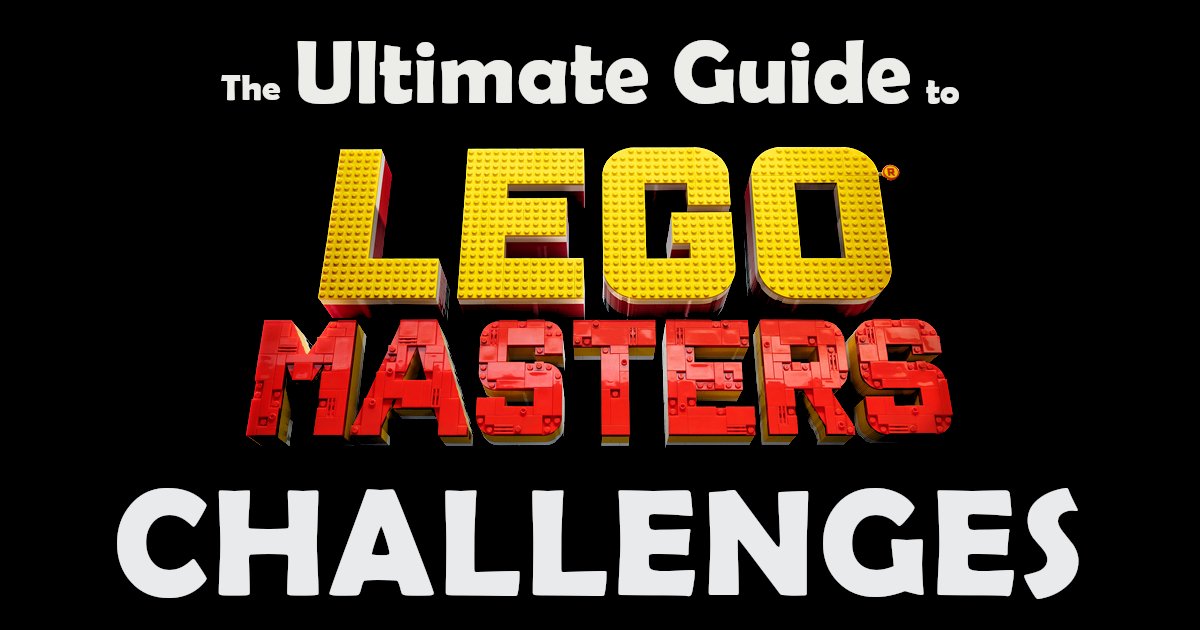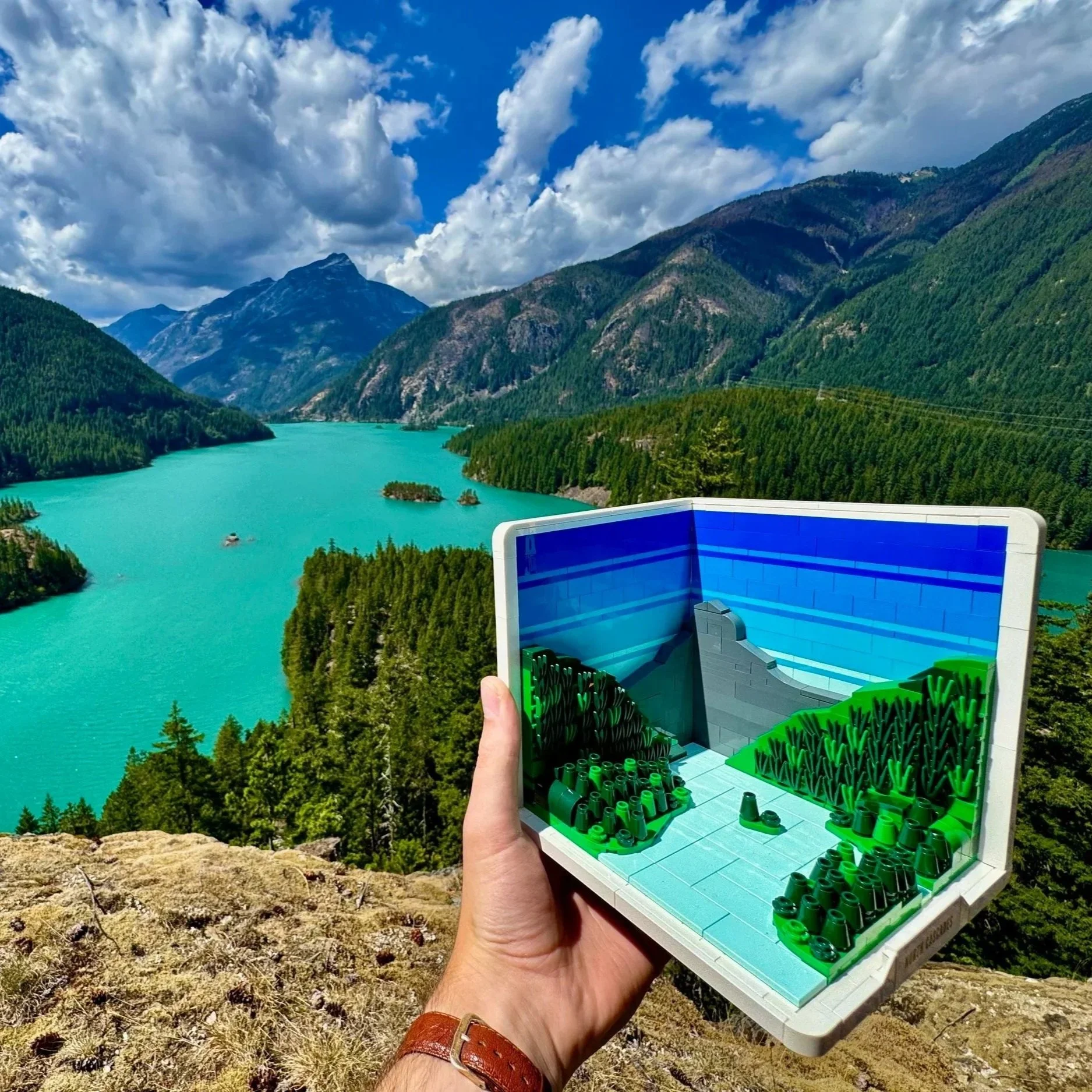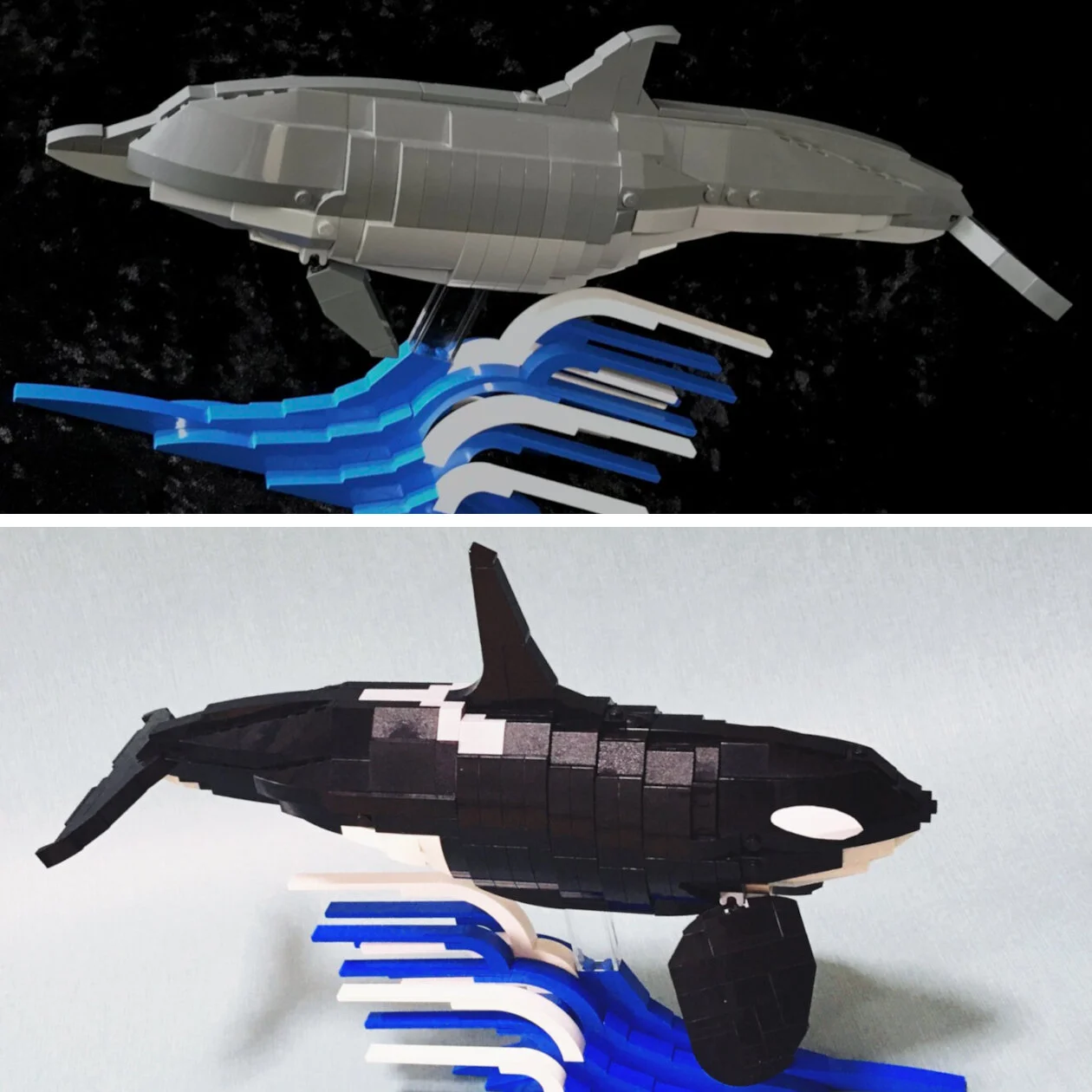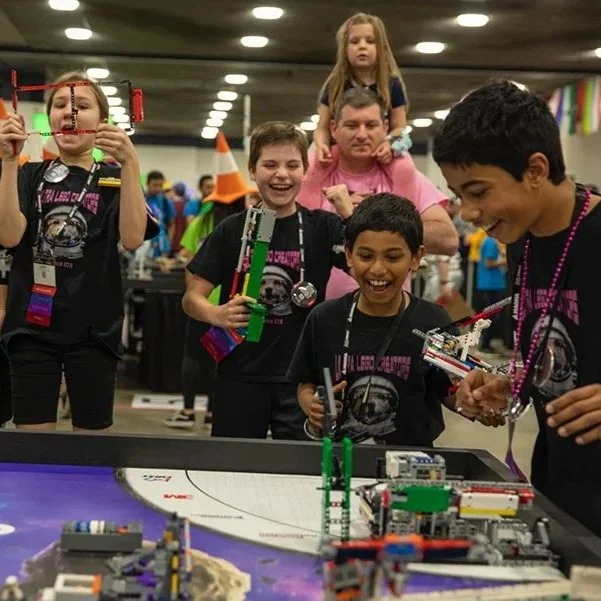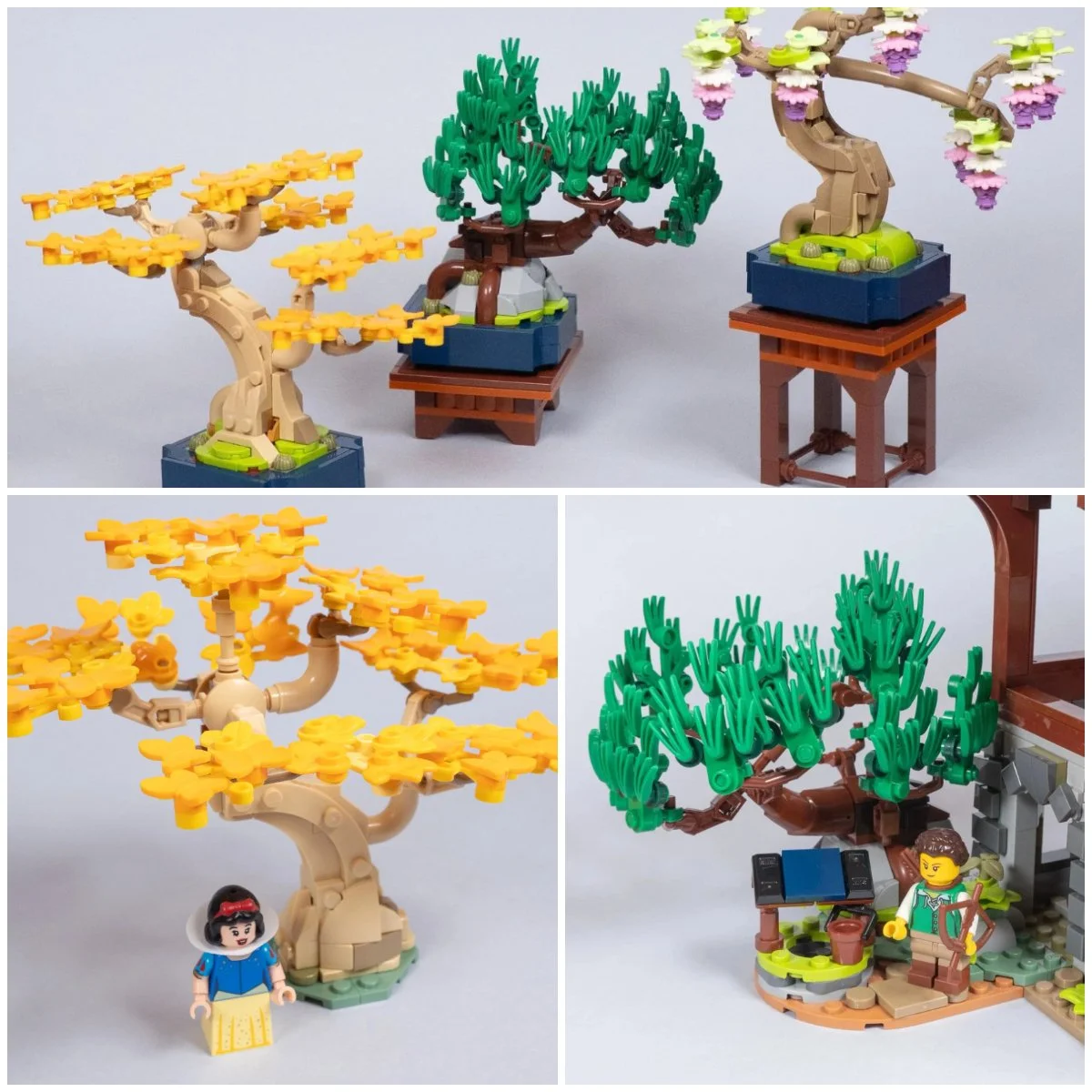The Ultimate Guide to LEGO Masters Challenges
/Best of BrickNerd: Weekend Highlight — Article originally published October 20, 2021.
LEGO Masters has a book of 100 different building challenges (and growing), so if you wanted to be a contestant in a future season no matter your country, which ones should you prepare for most? In today’s guest article, Michael Kanemoto (aka Moto from LEGO Masters US Season 2) shares his list of challenges from all the international versions of the show—and offers suggestions as to where they may appear next.
Mapping LEGO Masters Challenges
With LEGO Masters shows now airing around the world and in development for more countries, I thought it would be fun to map every challenge from every show to see if there were any interesting patterns. I started with the original United Kingdom show, then moved on to the Australian series as the modern template for the current productions around the world. I then traced and mapped out the United States, Germany, Sweden, Poland, France, and the Netherlands / Belgium.
As of this writing, I’ve mapped each episode in a detailed Google sheet that you are welcome to peruse. This sheet will be updated when future seasons of the show air.
Each challenge, if reused, has slight variations and twists for the production, but if the core idea is the same for the episode, I mapped them back to the name from the modern series that first aired the challenge. One great example is “Dream Park Theme Park” which was a challenge from the second episode of the original UK show. It’s appeared in the United States and French season 1, and the Swedish and Netherland / Belgium season 2 productions.
Challenge Patterns and Observations
The productions vary from country to country, but in general follow a pattern based on a production budget. The first UK show included children and adults, and was conducted in a single room with 4 to 5 episodes.
The Australian show was the first updated production with a larger studio featuring a front door system, main table build area, brick pit, and a gallery. All of the modern productions follow the concept but vary in layout and the stocking of the pit elements. The Australian format has 8 teams and adds more episodes each run, having started with 9, then 11, and most recently 14 episodes. It has a comedian host and a Certified LEGO Professional as the judge.
The modern challenges are all geared toward competitive speed building at a massive scale. They tend to break down into two basic types. The first is storytelling or narrative challenges designed to push teams into interpreting a brief to create a competing narrative. The second are technical challenges designed to have team builds fail spectacularly or have high chances builds will fall apart dramatically while building.
Some challenges carry a twist where the challenge is modified partway through the build or have a second unforeseen half to the building. Usually, the first seasons tend to have a greater emphasis on storytelling and the second seasons have more technical components to the challenges.
But there are a few interesting challenge patterns from the productions across the world.
The Finale
The most consistent challenge is the finale that we love and know so well. In each finale, teams are given 18, 24, or 28 hours to make any masterpiece they want. The US finales are an exception where they have added a challenge into the episode.
Season 1 Challenges
Some challenges seem to be used fairly often in the first season of a production.
Mega City Block: Create a city block in 15 hours to connect back into a LEGO City. Twist: 3 hours to show their building under attack. This challenge is very popular and has been used in all the modern shows, usually in the first episode. It’s a great storytelling challenge and leans into the popularity of AFOL city layouts. The attack layers in creature design and modeling skills.
LEGO Masters US IMages via Fox
Space Smash: Teams must build a LEGO space theme build in 7 hours. Strong enough to support itself and be moved into place, it is smashed in 1 of 3 ways: dropped from a height, smashed with a bat, or with explosives. This is an updated challenge from the “Drop Test” in the UK show. In AU there was a fourth method using a track. This challenge was in 4 productions; Australia, United States, Poland, France, and I think the Netherlands / Belgium production. It’s usually the second challenge of season 1. This challenge introduces the technical ability to “build to beak” where the design has to be strong enough to survive transport, but weak enough to break dramatically.
Cut in Half: 10 hours to build a second half of an object that had been cut in half. This challenge is incredibly popular and has been used twice in all the shows. It usually shows up in the third episode. It’s a great challenge for storytelling and modeling, as well as building off of unusual surfaces.
Via LEGO Masters Australia
Super Bridges: A challenge inspired by fan conventions, used in the UK and then updated for the modern show format. Teams are given two existing supports 6 feet or 2 meters apart and must build a bridge in 8-10 hours to be able to support the most weight as well as to be aesthetically pleasing. This challenge has been used in all the shows except for Germany. It’s usually placed toward the back half of the season. It’s a technical challenge where building speed is highlighted.
Time Train: 16 hours to build a world based on different eras – The Future, Prehistoric, Medieval, the Wild West, as a train should travel through each of the builds. This challenge was used in Australia, Sweden, Poland, France, and I think Netherlands / Belgium. It appears in some productions as the fourth challenge, or toward the end of the production as the second to last challenge.
Dream Park Theme Park: Build a theme park ride on empty two 48x48 baseplates with one motion that incorporates into a total theme park. From empty plots of a larger LEGO amusement park with an existing layout. This challenge started with the UK show and has since been updated for the United States, Germany, Sweden, France, and Netherlands / Belgium. It’s mixed between Seasons 1, 2, or 3 between productions and is the first or second challenge of the season. It’s a take on popular AFOL convention collaborations to build theme park modules only at a much larger scale.
IMage via Brick Fan
Season 2 Challenges
As of this writing, Australia, United States, Sweden, Germany, and the Netherlands / Belgium productions have completed their second seasons. The second season of the show tends to introduce more focus on technical challenges than storytelling challenges.
Hero Shot: 10 hours to create a forced perspective build on a slice with a randomly assigned mini figure. One of 4 explosion types are associated with the figure: Chalk, Slime, Glitter, and Water (Gel). Craft a look that in slow motion is similar to what you would see in an action movie as the hero struts away as an explosion goes off in the background. Australia, US, and Sweden had this challenge in their second season with Germany including it in their first season. It’s usually the second challenge of the production.
Tall Tower: 2 hours to build the tallest structure they possibly can only using 2x4, 2x6 & 2x8 bricks, however they cannot use a stool for more height. Australia, Sweden, and the Netherlands / Belgium shows used this challenge in the first half of the season. (Note: challenge contained an advantage)
Image via Bricktastic
One Hanging Brick: 10 hours to create a design building off of a technic brick hanging above their desks. This is a popular challenge appearing in Australia, United States, Germany, Sweden, and the Netherlands / Belgium productions. It’s used in the second half of the season around episode 5 as a difficult technical challenge to build and balance the model.
Make and Shake: 8 hours to build a 1.2m tall 32×32 tower, which will then be subjected to varying levels 1-10 of shaking on a shake plate. The tower must be at minimum 32x32 up to a certain height, then can be 24x24 to reach the max height. The strongest builds are placed into the top teams. The Australia, United States, and Sweden productions used this challenge. It’s a compliment to “Super-Bridges” where speed building for strength is emphasized. It usually appears toward the end of the first half of the season.
Good Vs. Evil/Evil Lair: These two challenges are variations of a storytelling challenge. For “Evil Lair”, teams have 13 hours to build an Evil Villain's Lair, complete with a getaway vehicle, booby traps, an escape path and a “Mega Weapon”. For “Good Vs. Evil”, teams choose two minifigures that are later determined to be heroes or villains. They then build their heroes'/villains' lairs and are put with another team to create a battle between their characters. “Evil Lair” was used in Australia and Sweden, while “Good Vs. Evil” was used in the United States and France.
Season 2 Challenges (Except the United States)
The United States second season introduced some new challenges not used in other productions in the world. The following challenges have been used in Australia, Sweden, and the Netherlands / Belgium productions with one exception noted at the end.
3D Art: 12 hours to create a 3D Art design inside a deep frame which is hung in a gallery. This challenge is usually put into the second half of the season. The hanging aspect of building sideways provides a technical challenge combined with the need to produce a work of art.
Above and Below: 12 hours to build a design on a large baseplate fixed to the top and another fixed the bottom of their construction table. This challenge appeared early in the German production and in the second half of the other productions. Building upside down and matching the above and below makes this another more technical challenge.
Smash and Grab: This is an advantage challenge. Teams have 4 hours to create a design with only the amount of LEGO pieces they can grab from the floor from a large-scale broken model within 5 minutes.
Night and Day: 12 hours to create a design based on 1 of 4 vacant blocks: residential, commercial, industrial and shared space, which must look amazing during the day and at night. More time was allocated for the US S2 finale.
IMage via Bricking Around
Underwater: 12 hours to build a underwater themed design that is submerged underwater. A metal basket platform is provided covered in baseplates. Australia and Sweden, but not the Netherlands / Belgium production.
Fantastical Beasts/Land and Sea: “Fantastical Beasts” is an advantage challenge: 6 hours to build a creature with characteristics of two animals decided by what animals they landed on two separate chocolate wheels. This was used in Season 3 of Australia. Another challenge, “Land and Sea” was used in the original UK production and the United States second season as a variation of this challenge. The teams are split up and the individuals build a land or sea creature. The teams are then handed a twist to combine the two builds together to concoct a hybrid animal.
Season 3 Challenges and Beyond
Australia and Germany have completed their third seasons. Because the German production has a limited run of episodes, many of the third season used Season 2 Australian challenges.
The one challenge shared by Australia and Germany is the Castles and Cannonballs challenge. Contestants have 8 hours to build a castle from a historical time period selected at random. Once finished, they were placed at the end of a bowling lane and smashed by a bowling ball.
The remainder of the Australian third season challenges have not been reused in any productions. They are:
Snow Globe: 10 hours to create a design of their choice that would look beautiful inside a snow globe which had to factor in how the snow would move around the globe and add to their story.
Mission to Mars: 8 hours to make a creation for a section of a spaceship, choosing what mankind would send to Mars.
Hero’s Quest: 12 hours to build an adventure section from a quest map. The sections are selected by teams 'first in best dressed'. The 6 lands to choose from were the Highlands, the Mediterranean, the Caribbean, the Jungle, the Frozen Lands, and the Desert.
Will They Fly?: Advantage challenge. 5 hours to build a creation that when suspended from a helium-filled weather balloon would remain neutrally buoyant (floating) for a count of 10 seconds.
Kale Scale: 8 hours to make a 5' 6" creation, but an extra restriction was that the creation could not be a building or a tower.
Four Seasons: 10 hours to create one of the four seasons at minifig scale on a giant baseplate. (Note: challenge contained a second chance)
Race: Advantage challenge. 4 hours to build a vehicle without using wheels and tyres that can race down a purpose-built track in the shortest time after several heats.
Dream Home: 11 hours to build their ultimate dream house. TWIST: Add a nightmare with 3 hours left in the build.
Marvel Cinematic Universe - Heroic Moment of Impact: 10 hours to create an action scene from the Marvel Cinematic Universe.
House of Colour: 12 hours to bring to life a pre-built, identical, greyscale house with colour.
Out on a Limb: 10 hours to dress an empty tree branch that was connected to a life-size LEGO tree. After the initial build, the base of the tree was opened to reveal an underground area. 5 hours to add an underground element to their build as well as modify the branch build to suit.
LEGO Masters Australia has been greenlit for a fourth and fifth season. It will be fun to see how those challenges map up against other countries if they continue into third seasons. The United States production followed Australia very closely in the first season but diverted quite a bit from the other productions in season 2. We will see if Australia continues to be the main pattern for the world and if the United States production will continue to throw newer challenges into the mix.
Theme Challenges:
Star Wars Theme: Star Wars as a theme challenge has appeared across some productions, but in variations. In the Australian and Netherlands / Belgium second seasons, the challenge was Star Wars Vehicles with 8 hours to create a new Star Wars vehicle aligned to a random figure representing the Dark Side, the Light Side, or grey like a bounty hunter.
In the first season of the United States, there was an advantage challenge Star Wars Droid where contestants had to build a droid that fit into the Star Wars universe with some form of motorized action. It was followed by Star Wars Scene where they had to choose an iconic scene from the Star Wars films and reconstruct it. The advantage challenge set the order that the teams chose the scenes.
Marvel Cinematic Universe: The MCU has appeared in Season 3 of Australia as mentioned above. Marvel Cinematic Universe - Heroic Moment of Impact: 10 hours to create an action scene from the Marvel Cinematic Universe.
In terms of media licensing, the two themes fall under both the Disney and LEGO umbrella of licensing, so it seems as if Harry Potter or DC themes wouldn’t fit as their media rights are under Warner Brothers—but time will tell.
Standalone Challenges
Most of the challenges that have only appeared once seem to fall into a few categories.
The first are regional-specific challenges found in the Swedish production. For Sweden, the Astrid Lindgren challenge asked teams to create scenes from famous Swedish children’s author Astrid Lindgren. The TV Show challenge also used in Sweden had teams build a scene from a list of well-known Swedish competition-based unscripted TV shows. The scene had to include a brick-built character from the show.
Another set of challenges ask teams to recreate an object or person as part of the challenge. These are smattered through the Netherlands / Belgium show. They are:
Replica: 6 hours to replicate a household product.
Easter Egg: Advantage challenge. Replicate an Easter Egg.
Teammate Portrait: Advantage challenge. 2 hours to build a portrait of your teammate.
Blind Pear: Advantage challenge: 2 hours to build a pear and incorporate it into a story. One member has to build blindfolded while the other verbally guides them. Every half hour the team members swap roles. This is taken from a popular activity at LEGO conventions.
Creative Replica: Recreate an object in 6 hours. Twist: Create a full story by changing models with the team to their left in 8 hours. This is very similar to the “Fantastical Beasts”/“Land & Sea” challenges but using objects instead of animals.
Recreation: First task, build a miniature version of an appliance: radio, blender, Polaroid camera, sewing machine or toaster. Second task, reconstruct the appliance and create a fantastic scene in the back explaining how the item works.
The second season of the United States show included some new challenges. They are:
LEGO Day Parade: Build a self-reflective float with at least one moving component for the first annual LEGO Day parade.
Hats Incredible!: The teams must build wearable LEGO hats based on a color chosen that will match with given clothes. The teams must choose one member to model their hat in a fashion show and last five seconds without holding up the hat to strike a pose. Twist: Each team must make an accessory.
Demolition Derby: Create a vehicle on a provided RC base that would win in a demolition derby against all of the other teams’ entries.
Bricking Wind: Build a world with a windmill that is able to withstand 60 mph wind. Many addiitional rules around height, placement, mechanics and motion.
Puppet Masters: Create one puppet and then act out a puppet show with another team.
Flip My Block: Take a provided stock house and use every piece to turn it around into their own dream house with a minimuim of four types of motion. Twist: Each team is provided seed parts that they must use every last element in their model, with higher consideration for the more NPU.
Cliffhanger!: Build a castle off of a vertical wall with minimal stud connections. The team with the longest extension from the wall advances automatically.
Image via Brick Banter
The Netherlands / Belgium season 2 production included a new challenge:
Nesting Builds: Advantage challenge. 2 hours to make a series of builds that nest within each other and tell a story. This appeared in.
It will be interesting to see if the United States and Netherlands / Belgium challenges appear down the line in other productions.
The Future of LEGO Masters Challenges
It’s known that there is a book of over 100 possible LEGO Master challenges. I’m excited to see more as some seasons continue and newer productions are developed. I’m really looking forward to the newly announced LEGO Masters shows in China, New Zealand, Spain, Colombia, and Chile.
So that is your list of all the challenges from every version of LEGO Masters so far. Remember that this spreadsheet will be updated as new seasons air. But until then, good luck to all the future contestants around the world that may face some of these challenges or new ones to come!
What is your favorite challenge from any version of the show? What do you think would be a good LEGO Masters challenge? Let us know in the comments below.
Do you want to help BrickNerd continue publishing articles like this one? Become a patron like Charlie Stephens, Marc & Liz Puleo, Paige Mueller, Rob Klingberg from Brickstuff, John & Joshua Hanlon from Beyond the Brick, and Megan Lum to show your support, get early access, exclusive swag and more.

